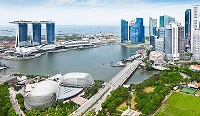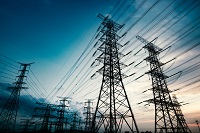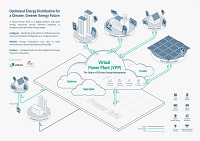- About EMA
- Our Energy Story
- Consumer Information
- Regulations & Licences
- News & Events
- Partnerships
About EMA
Who We Are
Learn about EMA’s leadership, milestones and accomplishments.
Join Us
Explore the career, scholarship and internship opportunities available in EMA.
Our Energy Story
Overview
Learn how the Singapore Energy Story charts the path to a net-zero future.
Energy Supply
Gain insights into the Four Switches powering Singapore towards a cleaner energy future.
Energy Demand
Discover ways to enhance energy efficiency and lower your carbon footprint.
Energy Grid
Explore how EMA ensures a reliable and secure energy supply for everyone.
Energy Market Landscape
Learn about the intricacies of Singapore’s energy market structure and operations.
Consumer Information
Electricity
Get tips on buying electricity and protecting your family from electrical hazards.
Gas
Learn about purchasing gas and safeguarding your family against gas hazards.
Solar
Access information on installing solar panels at your home and selling excess electricity to the national grid.
Regulations & Licences
Regulations
Stay up-to-date with the latest regulations, policies and frameworks governing the energy sector.
Licences
Learn about the licences that EMA issues to different stakeholders in the energy sector.
Regulatory Publications
Read about the Codes of Practice and Circulars that EMA publishes to regulate the energy sector.
Partnerships
Calls for Proposal
Collaborate with EMA in co-creating innovative solutions for the energy sector.
Consultations
Give your comments and feedback on EMA’s policies and regulations.
R&D Engagements
Discover how EMA works with stakeholders to catalyse new and innovative digital technologies.
Talent Development
Learn about EMA’s efforts in nurturing talent and cultivate interest in the energy sector.
eSERVICES
Get quick access to EMA’s services for application of worker licences, scholarships and more.
Government officials will NEVER ask you to transfer money or disclose bank log-in details over a phone call. Call the 24/7 ScamShield Helpline at 1799 if unsure. For more information on how to protect yourself against scams, please visit www.scamshield.gov.sg.
How is the electricity tariff determined?
There are two key components of the electricity tariff - fuel cost and non-fuel cost. The fuel cost component for each quarter is calculated using the average of daily natural gas prices in the first two-and-a-half month period in the preceding quarter.
The non-fuel cost component reflects the cost of generating and delivering electricity to homes. It comprises mainly the grid charge, and the capital and operating costs of generation companies. There is a time lag in the gas price reflected in the electricity tariff because changes in gas prices in the current quarter will only be taken into account in the next quarter's tariff.
This means that any increase or decrease in gas prices in the current quarter will only be reflected in the next quarter’s tariff. Refer here for more information.















